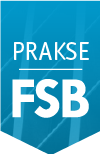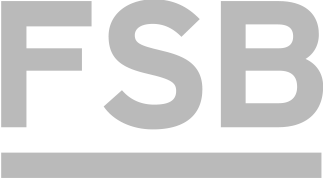International Exchange
Course details
Student Mobility > Programmes and Courses > Courses in English > Course detailsProcess and Operation Planning
- Teaching:
- ECTS:
- Level:
- Semester:
- Prerequisites:
- There are no requirements for enrollment in the course. Entrance competences for this course in the form of knowledge are acquired from technologies, materials, design, strength of materials.
- Load:
Lectures Exercises Laboratory exercises Project laboratory Physical education excercises Field exercises Seminar Design exercises Practicum 30 0 30 0 0 15 0 0 - Course objectives:
- Introduce students to the goals and function of process and operation planning. Definiton and importance of process planning (PP) with examples (primary process selection, selection of operations and operation sequencing, machine tools and tools machine selection. Definition of time and material norm, process time calculation, cost estimation. PP optimization with case study. An approach to production modernization. Improvement and development od PP.
- Student responsibilities:
- Grading and evaluation of student work over the course of instruction and at a final exam:
- Completely written, submitted and presented project 50 %. Mid-term exam 50 %.
- Methods of monitoring quality that ensure acquisition of exit competences:
- Knowledge assessment by 2 mid-term exams, with continuous monitoring of participation in classes. Continuity in project design and its presentation to colleagues.
- Upon successful completion of the course, students will be able to (learning outcomes):
- Upon passing the course and defending and presenting the project, the student will be able to: Select the primary process, Select the operations, tools and machine tools, Select operation sequencing, Select the variant process planning of the product, Compare different variants of production for the same product, Estimate the production time and cost of the product, Specify the parameters of machining and define technical documentation, Suggest possible improvement of product production, Calculate boundary number of products for selected variants.
- Lectures
- 1. Introduction. Significance and features of process planning (PP). Role of PP in the company.
- 2. Fundamentals of machine technologies, machine tools used, tools and accessories.
- 3. Features of systematic approach to PP, primary process selection (Halevi, ASM).
- 4. Primary process selection.
- 5. Operation selection and sequencing, machine tools and tools selection, technological process variant selection.
- 6. Dimensioning and production tolerances, positioning and clamping, machining errors.
- 7. Function, shape and geometry of cutting tools (standard, special). Definition and types of jigs and fixtures, general features, classification, examples and case studies.
- 8. Work study. Work rationalization. Work design and definition. Work study and IT solutions (UmtPlus).
- 9. Work time structure. Definition, measuring and time design. Ergonomics (Siemens Jack).
- 10. Group process planning. PP for CNC machines and machining centres. Group technologies, Computer aided process planning CAPP, PLM.
- 11. Time and cost estimation of production.
- 12. Production improvement methods (Kaizen, Lean, Reengineering, SE, CE).
- 13. Methods of technological production improvement, technology transfer, success criteria. Interaction of production program, production methods and equipment with used production strategy.
- 14. Industry 4.0 concept
- 15. Green supply chain management. Sustainable production.
- Exercises
- 1. Examples.
- 2. Examples.
- 3. Examples: primary process selection (Halevi). Assigning a project.
- 4. Examples: primary process selection (Halevi). Primary process selection in project by technical documentation of product. Consultation related to the project.
- 5. Examples: Operation sequencing. Consultation related to the project.
- 6. Cutting tools selection (standard, special and multi-operational) for assigned student projects. Consultation related to the project.
- 7. Comparative examples of machining with and without various jigs and fixtures, cost estimation, time estimation. Sketching of needed clamps and fixtures in projects. Consultation related to the project.
- 8. Mid-term exam 1.
- 9. Production rationalization methods. Time measuring with manual and machine-manual work. Consultation related to the project.
- 10. Time norm definition. Time definition and frequency of actions. Work day structure (WDS) by appearance (MIO). Operation time estimation by PDTS (MTM, MOST software) method. Software/Statistical analysis of time study results. (UmtPlus, Study Works).
- 11. Examples of single and group PP. Definition and use of jigs and fixtures on CNC machines and machining centres on example defined in project. Example of PP for CNC machines and machining centres definition. Consultation related to the project.
- 12. Examples of CAPP and CAM modules. Examples of PLM software and simulation possibilities. Consultation related to the project.
- 13. Presentation of PP project.
- 14. Presentation of PP project.
- 15. Mid-term exam 2.
- Compulsory literature:
- Halevi, G., Weill, D., R., Principles of Process Planning, Chapman & Hall, ISBN 0 412 54360 5, London, 1995.
R. Kesavan, C. Elanchezhian, B. Vijaya Ramnath, Process Planning and Cost Estimation, New Age International Publishers, 2005, ISBN 978-81-224-2941.
Ron A. Walsh, Handbook of Machining and Metalworking Calculations, McGraw Hill, New York, 2001, ISBN 0-07-163391-X
Taboršak, D.: Studij rada, Orgdata, Zagreb, 1994.
B. Rebec, Naprave, FSB, 1976. - Recommended literature:
- Balič, J., Veža, I., Čuš F.: Napredne proizvodne tehnologije, FESB, Split & Fakulteta za strojništvo, Maribor, 2007, ISBN 86-435-0777-6; poglavlje 4 Predrag Ćosić, Planiranje procesa u web okruženju, str.59-97.
Filetin, Tomislav, Izbor materijala pri razvoju proizvoda, FSB, ISBN 953-6313-33-2, Zagreb, 2000.
K.G. Swift, J.D. Booker, Process Selection, From Design to Manufacture, Butterworth Heinemann, Oxford, ISBN -13: 978-0-7506-5437-1, 2006.
Buchmeister, B., Polajnar, A., Priprava proizvodnje za delo v praksi, Strojniški fakultet, Maribor, 2000.
Majdančić, N., Čuljak, S., Priprema proizvodnje I, II, III, Strojarski fakultet, Slavonski Brod, 1991.
Jurković, M., Tufekčić, Dž., Tehnološki procesi - Projektiranje i modeliranje, Mašinski fakultet, ISBN 9958-609-03-7, Tuzla, 2000.
Gačnik, V., Vodenik, F., Projektiranje tehnoloških procesa, Tehnička knjiga, ISBN 86 7059-085-9, Zagreb, 1990.
E.K. Heriksen, Jig and Fixture Design Manual, Industrial Press, New York, 1982.






